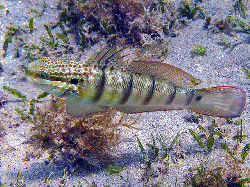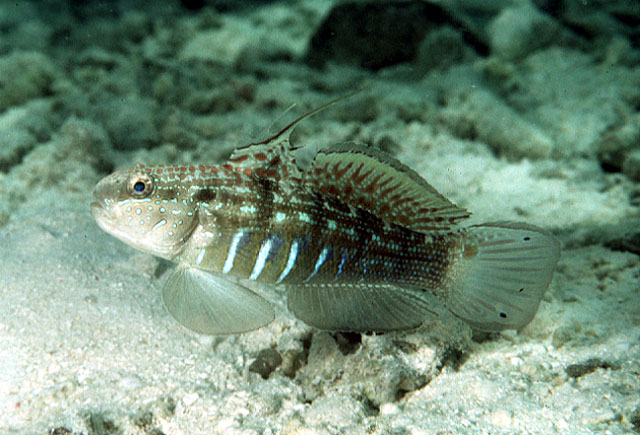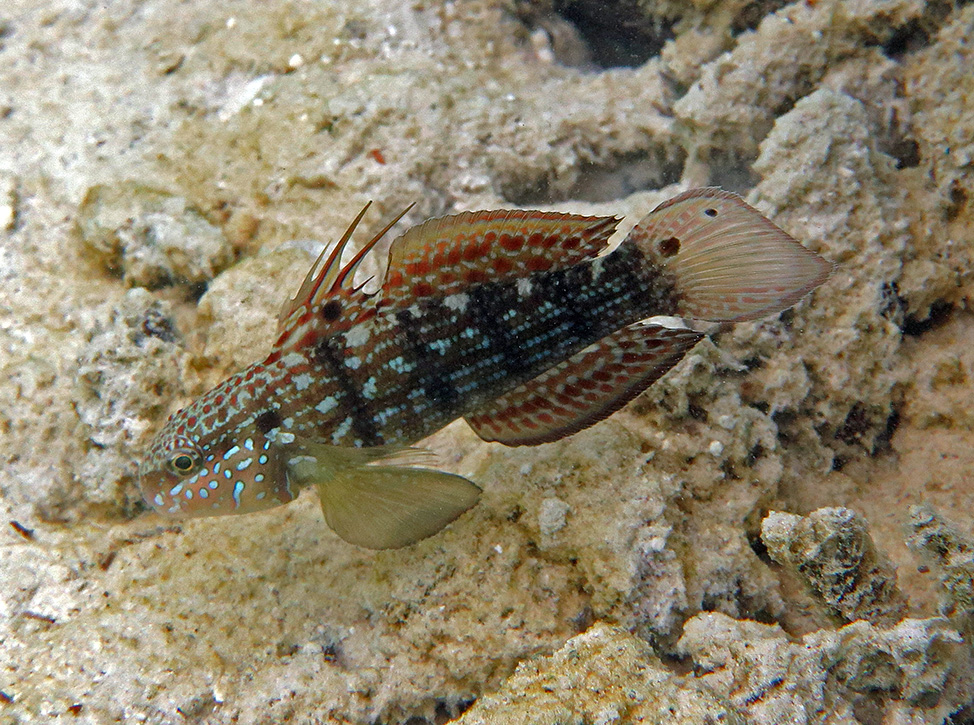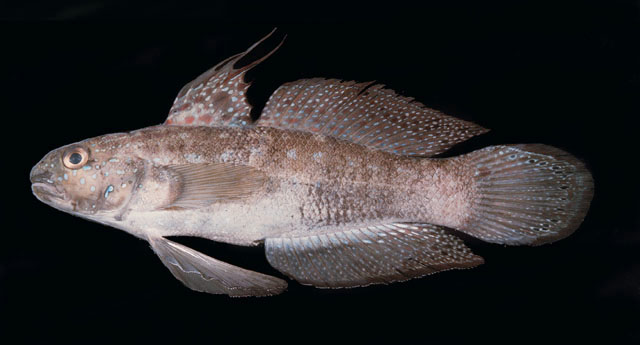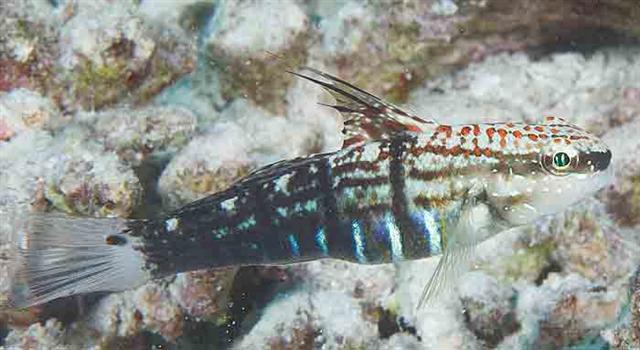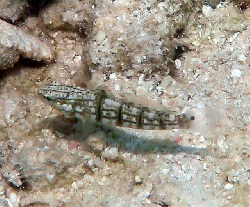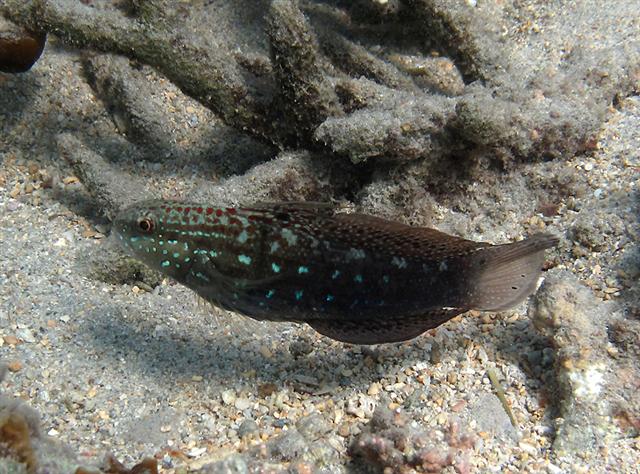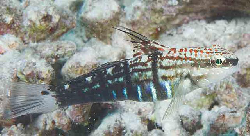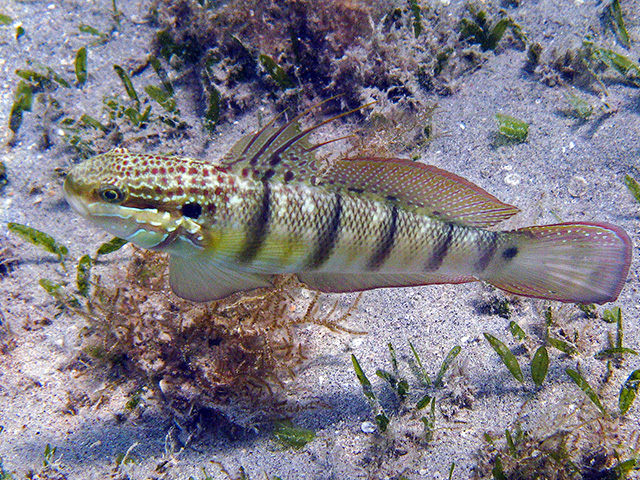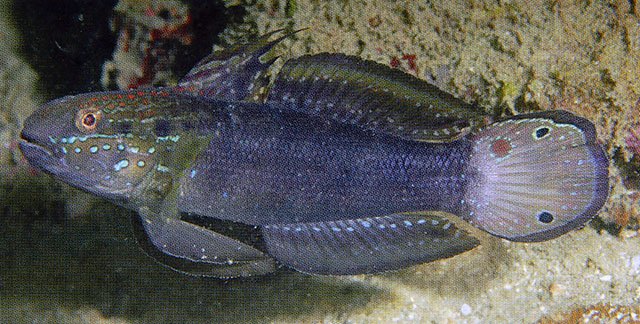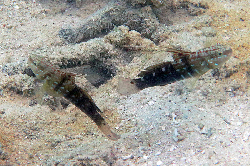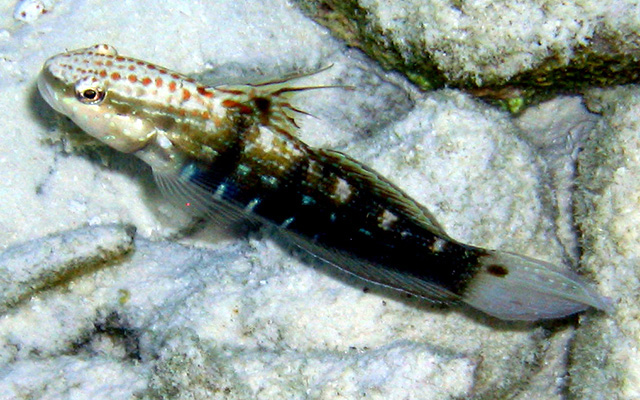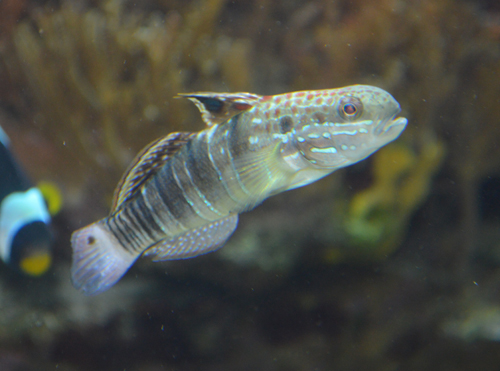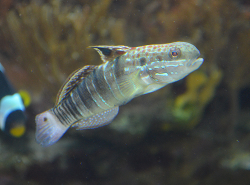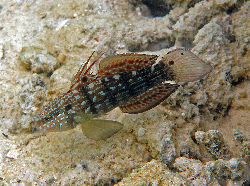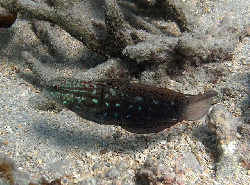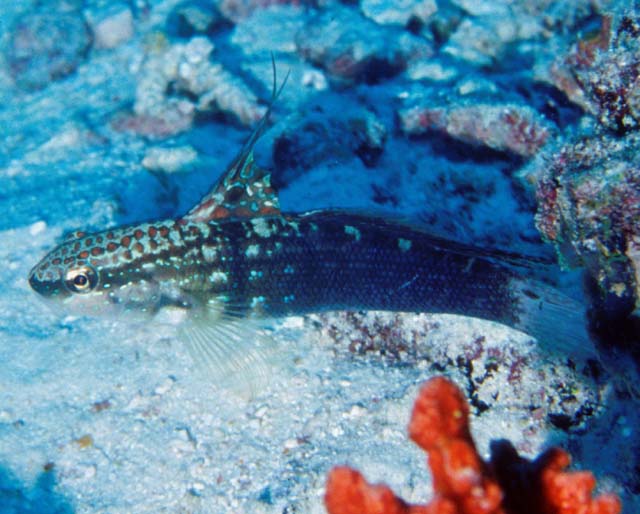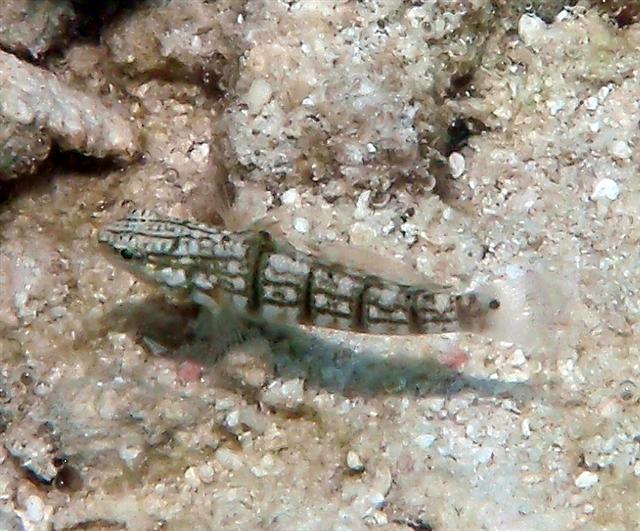Amblygobius semicinctus (Bennett, 1833)
Description
Dorsal spines (total): 6 - 7; Dorsal soft rays (total): 14 - 15; Anal spines: 1; Anal soft rays: 14 - 15. Characterized by greenish brown body color with complex pattern consisting of longitudinal rows of small white spots; side of body with five narrow brown bars; presence of dark brown band from snout, through eye, to upper back; cheek with white spots and lines; dark-edged red spots dorsally on head; large brown spot above gill opening; basal part of upper caudal fin with large red-brown to blackish spot; 1-2 small black spot on outer part of caudal fin; prolonged third and fourth dorsal spines as short filaments, first dorsal fin taller than second; rounded caudal fin; longitudinal scale series 60-67; ctenoid scales; cycloid scales on nape, abdomen, and breast; predorsal scales 22-25, extending to interorbital space; scales dorsally on opercle, absent on cheek; depth of body 3.5-4.6 in SL (Ref. 90102).
Common Names
Taxonomic Hierarchy
Kingdom: Animalia
Phylum: Chordata
Class: Teleostei
Order: Gobiiformes
Family: Gobiidae
Genus: Amblygobius
Species: Amblygobius semicinctus (Bennett, 1833)
Climate Zone
Location
Biology
Inhabits protected, silty lagoons and estuaries (Ref. 48637). Occurs in pairs, over its burrow beneath rock or rubble; usually hovers a short distance above the bottom. Monogamous (Ref. 52884). Gut contents of a 6.5 cm SL specimen contains mainly fine, unbranched, filamentous algae and harpacticoid copepods, also polychaetes, tanaids, decapod shrimps, amphipods, and nematodes (may have been parasitic).
Habitat
brackish
